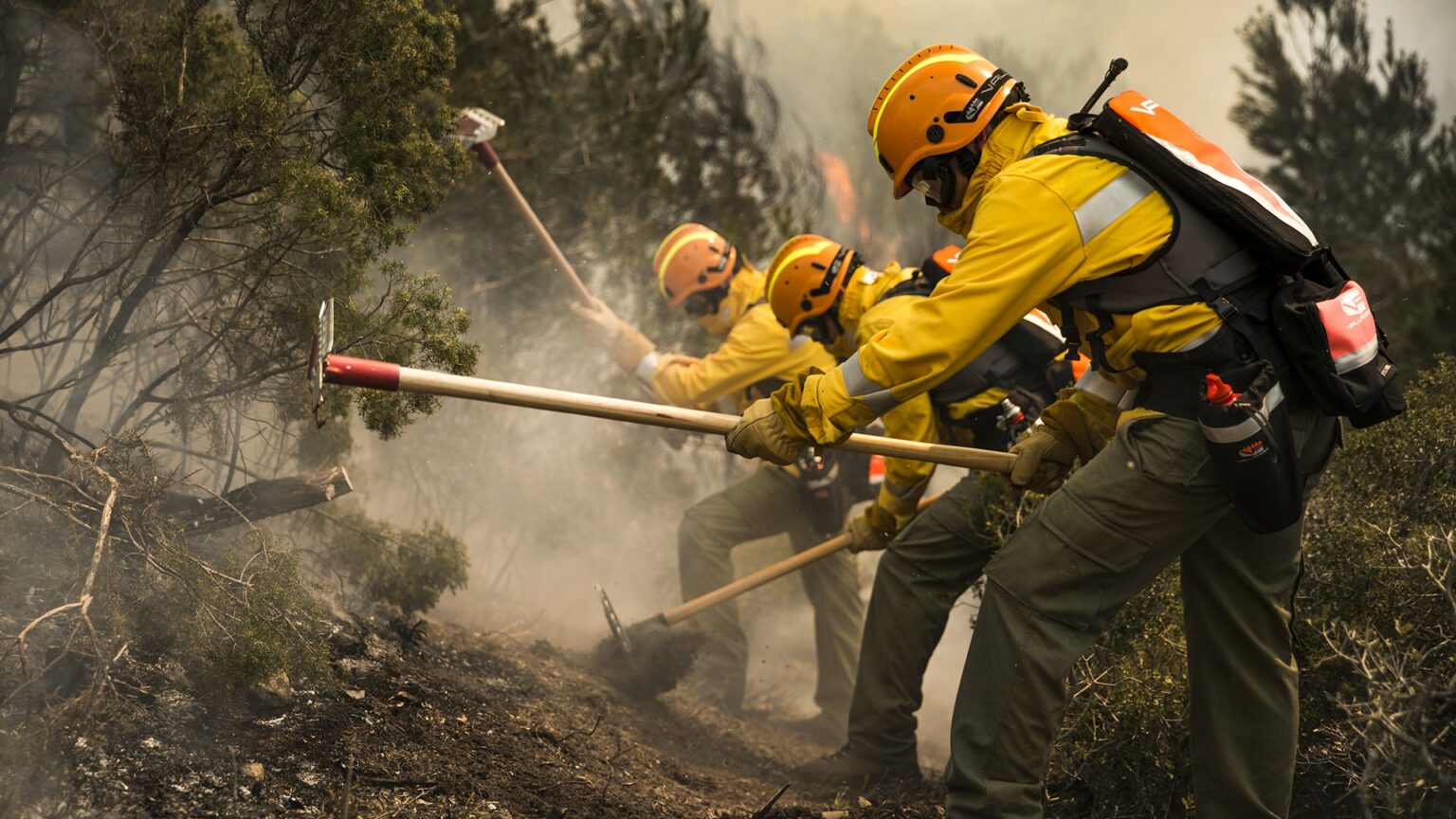An exploration into wildland firefighting tools: Tackling innovation and challenges
- August 3, 2023
- 8:00 am


Iain Hoey
Share this content
Unlocking Vallfirest’s wildland firefighting toolbox: New trends and enduring staples
In an effort to shed light on the varied components integral to wildland firefighting, Vallfirest has unveiled its latest ‘toolbox’ concept.
This encompasses the wide spectrum of tools used in operations, each having their distinct suitability to specific tasks or fuel types.
Certain tools pair better together, fostering efficiency in combination. Take a deep dive into this concept via their dedicated webpage, and read some highlights below.
Hand and power tools in wildland firefighting
Lightweight hand tools like fire swatters and shovels are crucial for tackling burning fuel.
Equally important are tools for creating a hand line reaching down to mineral soil, such as the Gorgui, the Pulaski, the McLeod, or rakes.
Chainsaws and power blowers are examples of power tools, which while requiring fuel and maintenance, offer varied performance and options. Backpack pumps also fall under this category, requiring no water installation.
Despite being economically advantageous and long-lasting with proper maintenance, these tools do demand significant physical effort from the user and their suppression capacity is confined due to flame intensity.
Water as a quintessential firefighting resource
Water remains the supreme medium for fire suppression.
High-pressure hose nozzles can displace incandescent material and penetrate the ground, and water’s non-expiring, non-polluting nature allows for foam, wetting agents, and retardants to be added to it.
Transporting it doesn’t require pressurised tanks like CO2 does.
However, setting up a hose line requires substantial effort, potentially slowing down operations.
Solutions like the Heliskid offer suppression systems that can be transported by land or air, enabling direct hose line attacks in remote areas.
Aerial resources: An age-old ally in wildland firefighting
Aerial resources have played a pivotal role in wildland firefighting since the 1930s.
Helicopters and aeroplanes, apart from water or retardant dropping, serve to transport crew members and equipment.
They can also aid in control and coordination tasks for the unit deployed on the ground.
Tactical burns and heavy machinery in wildland firefighting
Drip torches allow fire to be used as a suppression tool, executing backfires, burnouts, or defining perimeters.
Bulldozers, on the other hand, aid in creating wide control lines, anchor points, and establishing safe zones, albeit with logistical challenges in deployment.
To address this, tools like the Dronster have been developed to provide safety and efficiency for crews.
Future of wildland firefighting: Tech innovations and safety
As we move into the future, the development of new tools and technologies such as virtual reality and artificial intelligence could become pivotal in fire prevention and suppression.
Amidst this, the safety and security of wildland firefighters remain paramount, necessitating the development of advanced equipment, safety protocols, communication systems, and real-time health monitoring equipment.
Additionally, the significance of continuous education and training in preparing wildland firefighters for the evolving challenges presented by wildfires cannot be overlooked.
The report was made possible due to the Vallfirest x The Emergency Program agreement.
IFSJ Comment
Vallfirest’s latest toolbox provides in-depth insight into the various tools, strategies, and evolving technologies shaping the field of wildland firefighting.
The innovations discussed could revolutionise firefighting tactics, potentially enhancing both safety and effectiveness in challenging environments.



